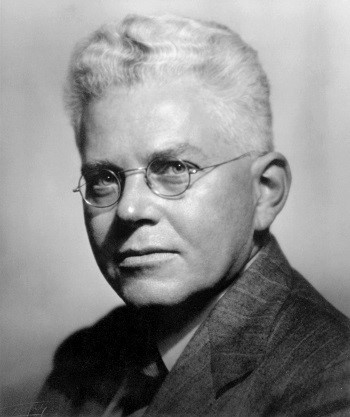
A recent article in the Academy’s history of science journal, Historical Records of Australian Science, reveals surprising insights about the involvement of the Academy’s founding President, Sir Mark Oliphant, in the development of the atomic bomb by the Allies during WWII.
The article’s author, Darren Holden, analyses the importance of Mark Oliphant’s meeting with Ernest Lawrence and Robert Oppenheimer in September 1941 at the University of California, Berkeley. This was the meeting that, some would argue, ultimately led to the Manhattan Project.
Holden discusses that the British agencies had cautioned Oliphant and other scientists in their exchange with their US counterparts and had drawn up in a memorandum, which was to be signed, the rules of engagement and how the knowledge exchange was to take place. Oliphant’s signed secrecy declaration has never been found.
Holden presents archival evidence showing Oliphant breached security protocols and circumvented the correct channels in passing on bomb physics secrets in 1941. However, Holden argues that it should not be assumed that Oliphant’s so-called ‘indiscretion’ shows carelessness or an anarchistic attitude towards the rules. In contrast, he argues that Oliphant’s Berkeley meeting was not a ‘careless blurt-out of secrets, but a risk-managed event’, and falls under the definition of ‘an invisible college’. Holden explains that the role of the invisible college in science involves putting aside secrecy or self-interest to share ideas and test hypotheses, bypassing the usual formal channels dictated by institutions.
As Holden observes, ‘the Allies … won the first atomic arms race through not only the fine intellect of their scientists, but also through scientific social networks built on friendship and trust. [Oliphant’s] … belligerence, impatience and trust in fellow scientists, irrespective of secrecy provisions, paved the way for an accelerated development of atomic warfare.’
Also in the latest edition of the journal there are articles on non-CO2 greenhouse gas research at CSIRO up to 1990 and early developments in radiocarbon dating at the Museum of Applied Science in Victoria, as well as biographical memoirs for Academy Fellows Brian Kay, James Morrison and Lawrence Nichol.
Fellows can access the journal’s content at no cost by logging in to the Fellows’ page of the Academy’s website and following the link.
© 2025 Australian Academy of Science